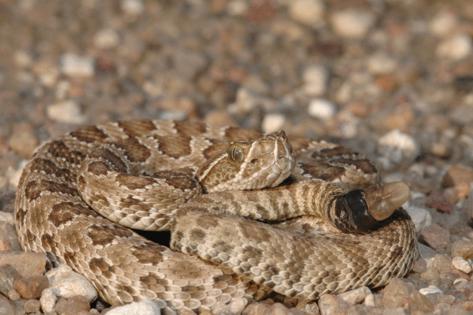Have you seen these snakes in California? Why you shouldn't kill them
Published in News & Features
SACRAMENTO, Calif. — California is home to 50 different species of snakes — including seven species of rattlesnakes, according to the California Department of Fish and Wildlife.
If that makes your skin crawl, you’re not alone. Many people are “somewhat fearful” of snakes and reptiles in general, according to the Cleveland Clinic.
“While people may fear snakes, they’re critically important animals for our world,” Michael Starkey, founder and executive director of Save The Snakes, told The Sacramento Bee. “We need snakes.”
His Sacramento-based organization is dedicated to conserving a functioning environment between snakes and humans to create a “harmonious relationship,” Starkey said.
Here’s what to know about the scaly predators:
Was that a rattlesnake? How to identify venomous snakes
The rattlesnake are the only native venomous snake in California, according to the University of California’s Statewide Integrated Pest Management Program.
Rattlesnakes are most active from April through October, and can be found in “diverse habitats throughout California from the coast to inland desert,” the California Department of Fish and Wildlife and U.S. Forest Service said.
The reptiles typically hang out under rocks, logs and woodpiles, the National Park Service said.
You can identify a rattlesnake by its triangular-shaped head, diamond-patterned scales and the distinct sound of the rattle at the end of its tail, the state Fish and Wildlife Department said.
However, you shouldn’t always rely on sound to identify these snakes. Baby rattlesnakes don’t have rattles, and adult snakes’ rattles occasionally break off, according to the National Park Service.
Rattlesnakes can grow up to 4 feet long and tend to have “heavier, chubbier” bodies than other snake species, Starkey previously told The Bee.
What are common nonvenomous snakes in California?
The Golden State is home to dozens of nonvenomous snake species. Like rattlesnakes, they’re most active in the spring and summer.
According to Starkey and reptile website California Herps, here are some of the non-venemous snakes commonly found in California, and what they look like:
•California kingsnake: Found in deserts, grasslands and woodlands across California, California kingsnakes grow up to 5 feet long and have alternating light- and dark-colored bands on their bodies. “Kingsnakes are known to eat rattlesnakes and are resilient against the effects of rattlesnake venom,” state wildlife officials said.
•Yellow-bellied racer: As its name implies, this slender snake has a yellowish underbelly and a brown, gray or olive green back. Racers typically measure less than 3 feet long and can be found throughout California from the Sierra Nevadas to the Baja California border, according to California Herps.
•Sharp-tailed snake: This small, reddish snake can grow up to a foot long as an adult. lt’s most commonly found in moist, well-shaded forests in northern and central California.
•Striped racer or whipsnake: This thin, fast-moving snake has a distinctive whie or yellow strip on its black or dark gray scales. Striped racers grow up to 4 feet long and can be found from Siskiyou County to Southern California.
•Coachwhip racer: Long, thin and quick, coachwhip racers mostly call the Central Valley and Southern California home The snakes can be brown, tan, black or brick red, and grow up to 6 feet long.
Gopher snake or rattlesnake? This reptile gets confused with rattlers
Gopher snakes are commonly misidentified as rattlesnakes due to their similiar pattern and color, but they’re harmless to people, according to Starkey.
Gopher snakes tend to be tan-colored with large square brown blotches or saddles along their backs and smaller gray spots on their sides. They also hiss and shake their tails when threatened, just like rattlers.
However, gopher snakes tend to be a bit bigger than rattlesnakes — typically measuring up to 8 feet in length.
They’re among the “most widespread snake species in North America,” the Los Angeles Zoo said, with a range that extends from southern Canada to Baja California, Mexico
“They don’t mind being by people, because people attract rodents and they love to eat rodents,” Starkey said of gopher snakes.
What should I do if I see a snake?
When encountering a snake in the wild — whether it’s on a hiking trail, at a campground or in your own backyard — you should stay calm and give the reptile some room, Starkey said.
Then, he said, you should allow the snake time to wriggle away,
“If you’re really concerned, you can just take a long stick and find and tap the end of (the snake’s) tail and that snake is going to jet off the trail,” Starkey said. “That way it’ll keep other people that may not have noticed the snake from bumping into it.”
If you want to have the snake removed, call your local animal control department or dial 311 instead of handling the reptile yourself.
Follow these tips from the National Park Service to stay clear of snakes:
•Hike on established trails where the ground is clear, so you can see where you step.
•If you hear a rattlesnake, stand still until you see the snake, then walk away from it.
•Wear protective clothing such as long pants and high boots.
•Wear gloves when moving rocks or brush with your hands.
•Never put your hands in areas where you cannot see.
•Avoid ledges, cracks or holes where rattlesnakes may be resting.
What to do if you’re bitten by a rattlesnake
If you get bitten by a rattlesnake, experts say, you should stay calm but act quickly.
Most people survive rattlesnake attacks if they seek out medical help immediately, Starkey said.
“The longer you wait, the more likely you are to have permanent damage from the rattlesnake bite,” Starkey previously told The Bee. “So that’s why it’s so critical that if you are bitten, you drop everything you’re doing and get to a hospital.”
Beyond dialing 911 and seeking medical attention, Starkey and the National Park Service recommend taking these actions:
•Stop moving the limb where the bite occurred to limit venom from spreading.
•Gently wash the bite area with soap and water.
•Keep the bite slightly higher than the heart if possible.
•Mark the bite area with a pen and write down the time of the snake strike.
•Remove any watches, rings or jewelry that could constrict swelling
Spot a snake in California? Don’t kill it
Although you’re allowed to legally kill most species of rattlesnakes to “protect life and property,” the California Department of Fish and Wildlife said, you should try to make your environment less hospitable instead. According to Starkey, snakes usually come onto your property in search of food, shelter or water.
He recommends fixing leaks and securing pet dishes and air conditioning units.
You should also keep your yard clear of places where snakes could hide, remove potential food sources such as bird feeders and avoid feeding your pets outside, Starkey told The Bee in 2024.
Starkey and state wildlife officials emphasized the important role snakes play in the environment — both as predators and as prey for hawks, coyotes and other wild animals.
“All native snakes are part of the ecosystem and are beneficial,” the state Fish and Wildlife Deparment said. “For instance, many snake species, including gopher snakes, consume rodents and other pests, and some, like kingsnakes, actually kill and eat rattlesnakes.”
Snakes are a “wonderful form of natural pest control,” Starkey said.
“Farmers love snakes. Gardeners love snakes,” he said. “They help keep those pests away from our crops and our homes.”
____
©2025 The Sacramento Bee. Visit at sacbee.com. Distributed by Tribune Content Agency, LLC.







Comments